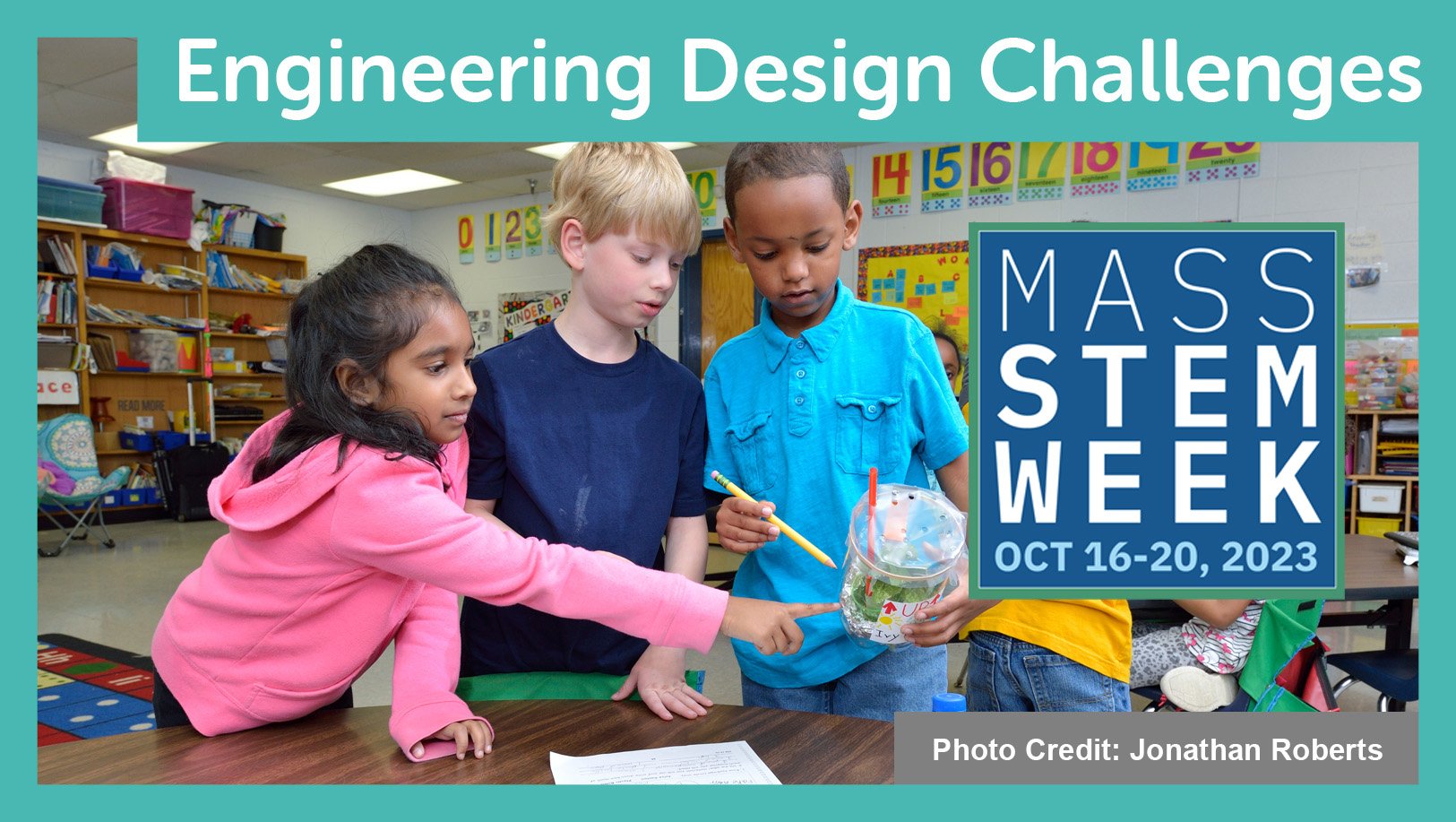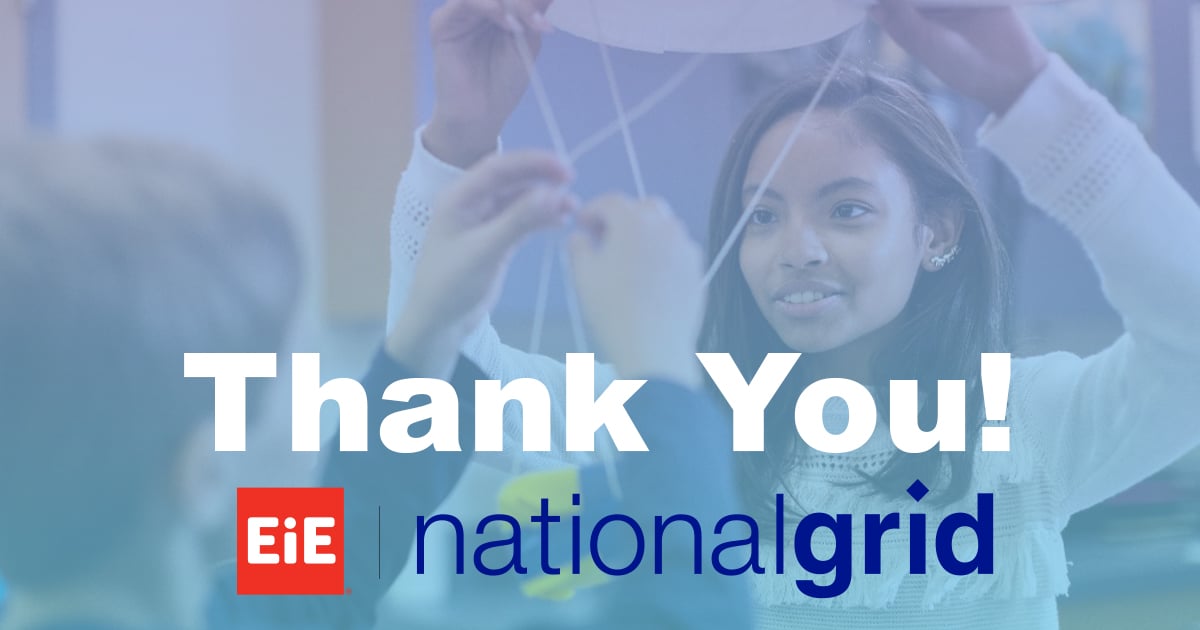We’ve talked before about what EiE looks like in the classroom and we offer a wide variety of videos that bring EiE to life. One topic we have not spent time talking about is our teacher guides. You may find yourself wondering what the guide looks like or how it will support you as you work with your students. To answer those questions (and more) we’re going to take a look through “A Long Way Down: Designing Parachutes”. While these examples all come from our Designing Parachutes guide, remember that all EiE units include these great features!
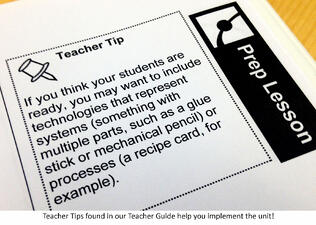
There are four lessons and one bonus prep lesson in each EiE unit. The prep lesson is called “Technology in a Bag”. This lesson takes about 30-40 minutes in the classroom and encourages students to think about technologies in a new way. Each group is given a paper bag that contains a technology—but the examples might not be what students first think about when they hear the word technology. The technologies in the bags are things like toothbrushes, erasers, or sponges. “Teacher Tips” that feature valuable suggestions and hints for teaching EiE lessons can be found throughout the teacher guides. One “Teacher Tip” from the prep lesson is to include technologies that represent systems or processes, like glue sticks or recipe cards, to encourage students to advance their thinking.
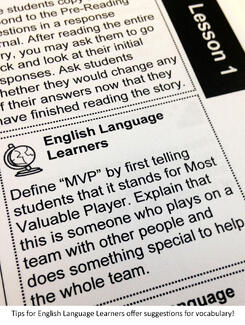 Lesson 1 of each unit begins with an engineering story. Typically, it takes teachers about 2 to 3, 40 - minute class sessions to complete the story. The storybooks introduce students to the engineering design process and set the stage for the design challenge they’ll complete in lesson 4. The story in our Designing Parachutes unit is called “Paulo’s Parachute Mission”. Throughout the story Paulo works to design a parachute to prevent fruit from crashing to the ground when he drops it from trees in the forest near his home in Brazil. Paulo gets help from his parents, both aerospace engineers, as he creates his parachute, and even manages to make a new friend in the process. A variety of comprehension and reflection questions are included for use before, during, and after the reading. The questions are intended to help students think deeply about the story and its engineering components. The “English Language Learners” boxes found in the margins of the lessons offer suggestions for explaining vocabulary words and enhancing understanding. A sample tip from “Designing Parachutes” is to make a list of words that relate to the term “aerospace,” explain the definition of the word, and ask students to brainstorm and share what they think aerospace engineers do.
Lesson 1 of each unit begins with an engineering story. Typically, it takes teachers about 2 to 3, 40 - minute class sessions to complete the story. The storybooks introduce students to the engineering design process and set the stage for the design challenge they’ll complete in lesson 4. The story in our Designing Parachutes unit is called “Paulo’s Parachute Mission”. Throughout the story Paulo works to design a parachute to prevent fruit from crashing to the ground when he drops it from trees in the forest near his home in Brazil. Paulo gets help from his parents, both aerospace engineers, as he creates his parachute, and even manages to make a new friend in the process. A variety of comprehension and reflection questions are included for use before, during, and after the reading. The questions are intended to help students think deeply about the story and its engineering components. The “English Language Learners” boxes found in the margins of the lessons offer suggestions for explaining vocabulary words and enhancing understanding. A sample tip from “Designing Parachutes” is to make a list of words that relate to the term “aerospace,” explain the definition of the word, and ask students to brainstorm and share what they think aerospace engineers do.
Lesson 2 provides students with an overview of the engineering field focused on in a given EiE unit. This lesson usually takes 1 session, or 40-60 minutes. Students will step into the shoes of the type of engineer (environmental, chemical, etc.) introduced in the unit. In our “Designing Parachutes” unit, students delve into the work of aerospace engineers and brainstorm how a planet’s features impact the design of a spacecraft. They’ll draw a fictional spacecraft and explain how its features match the destination and mission goals.
Lesson 3 guides students to collect and analyze data. This lesson takes about 1 to 2, 40-60 – minute sessions. Students may learn about and discuss properties of materials, make predictions based on prior knowledge, or collect and analyze data about scientific phenomena. Lesson 3 tends to contain an abundance of “Teacher Tips” covering everything from materials management to suggestions for incorporating extensions to the lessons. In the Designing Parachutes unit, Lesson 3 guides students to explore how things fall through thicker and thinner atmospheres and experiment with the materials they will have available for designing their parachutes. One “Teacher Tip” from the lesson suggests allowing students to carefully look at the materials using magnifying glasses to search for holes or pores in order to see whether the materials are permeable. This type of deep analysis will help students carefully choose materials in Lesson 4.
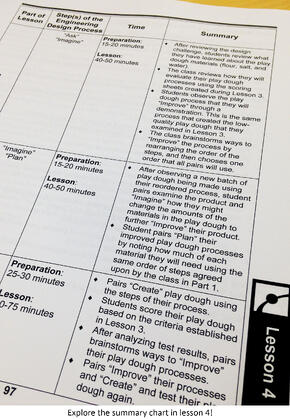 Lesson 4 is the engineering design challenge! Students will use their knowledge from lessons 1, 2, and 3 to design a solution to the engineering problem described in the storybook. This lesson takes 1 to 3 classroom sessions of about 50 minutes each. Each Lesson 4 provides students with time to test their initial designs and then improve upon their work. In the Designing Parachutes unit, students will be introduced to specific criteria and constraints and they’ll imagine parachute designs. They’ll then plan one design using all of the background knowledge they’ve gained throughout the unit. The building, testing, and improving that follows are the most exciting parts of the unit! When students drop the parachutes they have created, there are often cheers of glee. You’ll find a chart in the beginning of each Lesson 4 that breaks down the parts of the lesson, the anticipated time needed, and a summary of what will be covered. It is a useful planning tool to help you plan the exciting culmination of each EiE unit.
Lesson 4 is the engineering design challenge! Students will use their knowledge from lessons 1, 2, and 3 to design a solution to the engineering problem described in the storybook. This lesson takes 1 to 3 classroom sessions of about 50 minutes each. Each Lesson 4 provides students with time to test their initial designs and then improve upon their work. In the Designing Parachutes unit, students will be introduced to specific criteria and constraints and they’ll imagine parachute designs. They’ll then plan one design using all of the background knowledge they’ve gained throughout the unit. The building, testing, and improving that follows are the most exciting parts of the unit! When students drop the parachutes they have created, there are often cheers of glee. You’ll find a chart in the beginning of each Lesson 4 that breaks down the parts of the lesson, the anticipated time needed, and a summary of what will be covered. It is a useful planning tool to help you plan the exciting culmination of each EiE unit.
Each lesson comes with a variety of handouts, such as vocabulary sheets and data collection charts for students to complete. Basic and advanced versions of handouts are provided to help you meet the needs of all your students.
Are you interested in taking a deeper look and evaluating and a complete teacher guide? Think about the science you teach, and download the corresponding EiE unit. You may also consider how EiE connects to standards to help you choose a unit.





